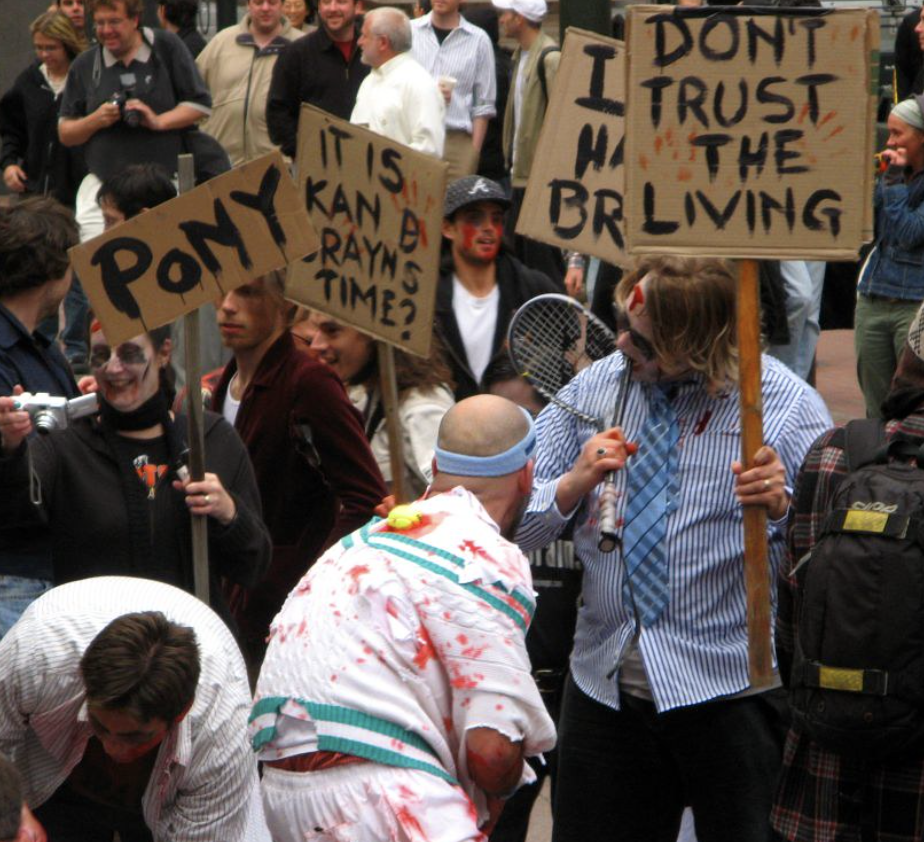So, I went looking for the source, although CleanTechnica conveniently "forgot" to link to its source material, it was easy enough to find.
It looks like this guy is the "president of sales" so of course he's interested in selling more product, in this case wind turbines. I hope he's better at selling wind turbines and he is at selling ideas, because this one is dead on arrival. Even CleanTechnica couldn't stomach it.
Chris's main problem seems to be that there's not enough transmission from the remote areas where his customers would put his wind turbines. This is cramping Chris's profits (and probably his bonus). So now Chris is an expert on electric transmission and has all the good ideas that nobody has ever tried before. And he deploys it using the most trite of propaganda devices.
The Bandwagon propaganda device attempts to persuade the target that everyone else thinks the same way as the propagandist. Use of inclusive words and ideas, such as "everyone", "we", "our", or "most Americans" are a way the propagandist draws the reader in to think that if they don't agree with "everyone" and conform, they're missing the bandwagon and will be left out or become unpopular. It replaces individual thought with group think. And there's nothing more dangerous to personal liberty than mob rule.
Every week you open your browser, scan the headlines, and see something to the effect of, “fossil fuels are out and clean energy is in”. The recent court decision upholding the shutdown of the Dakota Access Pipeline and Dominion and Duke’s decision to abandon their Atlantic Coast pipeline project indicate a changing tide in how consumers and utilities view our energy future.
Most Americans want clean energy. People want electric vehicles and a cleaner environment. But, our policies on building the infrastructure to deliver this clean energy future have not caught up to public sentiment.
In June, the leading renewable energy trade associations made a goal to reach 50% renewable energy by 2030. Meanwhile, if elected, Joe Biden will push for a carbon-free power sector by 2035. Goals aside, the fact remains we need more transmission to move cheap wind and solar from more rural areas to load centers if we want to reach ambitious clean energy goals. We need a new wave of electron pipelines.
Let's look at some of these ideas:
The Plains & Eastern transmission project exemplifies this problem. In 2009, Clean Line Energy Partners announced plans for a transmission line that would carry 4,000 MW of clean power from Oklahoma to load centers in the southeast and Mid-Atlantic. Years of navigating state and local regulations and gathering, then losing, federal support ensued.
By 2019, Clean Line had divested most of their transmission projects, including the Plains & Eastern Clean Line project, selling them off with the hopes someone else could overcome the endless regulatory and political battles associated with interstate transmission lines.
And here's the inconvenient truth Chris misses -- it's not lack of transmission connections that is preventing utilities in other states from buying remote wind. Even when the transmission connection can be made, customers fail to materialize, as the lesson of Plains & Eastern demonstrates. Why? Because states want to develop their own renewables because development of new renewables bring economic development to the state. Why send your energy dollars to Oklahoma when you can create new industry and new jobs in your own backyard? Offshore wind is coming! Onshore wind profiteers like Chris are nearly hysterical over it.
It's simply not true that if new transmission is built utilities will voluntarily elect to use it. Building new transmission is an attempt to FORCE utilities in other states to purchase imported power. The industry keeps bellowing (without support) that remote wind from the Midwest is "cheaper" than building renewables near coastal load. But how cheap is it really when the cost of the generation is combined with the cost of hundreds of billions of dollars of new transmission? Not so cheap anymore... and it provides no economic benefits to the importing states. The only way to make imported generation "cheaper" is to allocate the cost of building new transmission for export onto captive electric consumers who may not benefit, instead of the current requirement that the generator must pay its own costs to connect to the existing system. This idea cannot work because it upends the long-held principle that beneficiary pays for utility costs.
Of course Chris has ideas because he can solve any problem! Let's make "coordinated transmission working groups" to change the siting dynamic, "transmission NIMBYism" and community involvement. You mean Interstate Transmission Line Sighting Compacts? Yeah, that hasn't worked in 15 years. Why? Because no state wants to subject itself to mob rule of other states. Just because Chris has suddenly found the interstate compact idea doesn't mean it can suddenly work. It won't work.
Next idea...
In addition to state input, there should be back-stop federal authority when transmission projects reach an impasse. The 2005 Federal Power Act attempted to give FERC this authority, but the rule framework was convoluted and limited in scope, leading to several court challenges. Through a clearer and more definitive act of Congress, FERC can serve as the final decision-maker when a transmission project cannot garner all permits from state and local authorities, or the permitting process is delayed beyond a year.
If the majority of a transmission line’s route has received proper permits, but a small portion has been denied or delayed by regulatory challenges, a transmission developer should be able to bring the case before FERC for final adjudication.
To address the aesthetic concerns of high voltage transmission lines, policy-makers can consider tax incentives or direct pay reimbursements for companies that bury their power lines near residences and towns or work with communities to design more aesthetically-pleasing structures.
To aid in the clean energy future, these incentives should only be available to power lines that predominately transfer renewable energy. This would allow transmission developers to accommodate the very real concerns of citizens and not break the bank.
Chris also needs to learn that there is no such thing as a "power line that predominately transfers renewable energy." Power lines are open access... electrons from all generators get mixed up and there's no way to separate them. A transmission line cannot prevent "dirty" generators from using its line.
So who is all this propaganda directed at? Your elected representatives. If your elected representatives don't hear from you, they may believe Chris's lie that "most Americans" want huge increases in their electric bills to pay for new transmission lines in their own backyard that they'll have to fight in Washington, D.C. before people who have never set foot in their communities. Make sure your elected representative hears the truth from you today!


 RSS Feed
RSS Feed